| Umělec 2004/4 >> The Gwangju Biennale | Просмотр всех номеров | ||||||||||||
|
|||||||||||||
The Gwangju BiennaleUmělec 2004/401.04.2004 Tomáš Pospiszyl | info | en cs |
|||||||||||||
|
Gwangju is pretty far from Middle Europe. But the experiences from Southern Korea can be inspiring and empowering knowing that something’s happening somewhere. The Gwangju Biennale is a huge exhibition that brings top presentations of contemporary art creation to a place that has an interrupted or, to be more precise, no tradition of contemporary art. This presents a problem in itself, before considering what that does to the would-be viewers. It is great to show Pierre Huyghe, Gerhard Richter or Edward Rusch. But try to explain to someone with no experience with Western art why these are supposed to be the most interesting artists of this world.
Gwangju has been accommodating the biennale in irregular intervals for a decade. Curators, caught in the grasp of the local politicians who finance the whole thing, and baffled viewers are aware of potential problems. A cynic might perceive the curatorial principles of the biennale as copied directly from some grant-gaining workshop. The head curator of this show has not attempted to authenticate his own subjective incomprehensible thesis on the elite of contemporary art; he has rather attempted to present the art people of the world. And that is difficult to criticize. In practice it looked like this: the organizers of the show created an ideal model of world on the basis of a United Nations calendar: a Chinese peasant, a German linguist, a Korean schoolgirl, a Canadian housewife. They play a role for viewer-participants. Each one was assigned one world artist. A final art work was created from common dialogue and the artist’s listening to viewer-participants concerns. For some, the cooperation was no big deal, because the two personalities knew each other, or their world view was quite close. That was the case with the environmental guru Jerry Mander and the Californian artist Russell Crotty, who creates impressive visions of the unity of space, Earth and their observers—pencil drawings on a sphere base, from the view of a swimmer, catch the night sky, ocean and a faraway horizon. The co-operation might have become interesting thanks partially to chance, misunderstanding or lack of communication. The Cuban filmmaker Fernand Pérez cooperated with video-artists Jennifer Allora and Guillermo Calzadilla from Puerto Rico. Due to adverse circumstances they never managed to meet with each other. Allora and Calzadilla created a video of a man driving a moped on an unknown Carribean island. A trumpet installed in the moped’s exhaust pipe reacts to the engine. The journey through mountainous terrain thus becomes a musical composition that Pérez understood as a joyful song celebrating life and the symbiosis of a man and technique. The video-artists were reacting to a topical political problem of an American Military Base on the island; the trumpet was calling for an attack against uninvited enemies. Divergent readings didn’t harm the work’s impressive poetry. The level of cooperation varied. Ludmila Gorlova, from Russia, was coupled with an American soldier who put wrote some texts to accompany her photo comics of stories from the Bravo teenager magazine. Marco Maggi created an installation out of white sheets of paper. As a counterpart, he was entrusted with a manager from a hotel in Uruguay. Indeed, it is probably only because of the material used that we even notice her presence. Among other participants of interest was the Australian group called The Kingpins who, in their video-sketches, mask themselves as products of globalized popular media. The Czech artist Jan Nálevka would probably find common ground with Daniel Pflumm from Berlin, who uses and misuses company logos and works with them as with abstract paintings. Towering above the domestic artists of Korea was young Joon-ho Jeon, who used the landscape, the urban scenes and interiors from American bank notes as a basis for his interesting video-animation. The author places himself as a pilgrim into a world evocative of engravings from the novels Jules Verne, vainly seeking to understand what is going on around. With its large scale it is difficult to take in the whole biennale at once: The center of the exhibition is in a four-story exhibition hall and there are five associated exhibitions each featuring dozens of artists. Installations and interventions were shown also in the public space of the city of Gwangju. The only comparable artistic exhibition is that of Venice. The Biennale in Gwangju is an example of an ambitious exhibition that spreads the word of contemporary art in an insecure terrain. Up until now, Gwangju didn’t need global and multi-media art. The exhibition creates a heterogeneous whole that brings together a broad range of sometimes simple, sometimes inconspicuous, and often beautiful explanations for why contemporary art can be good. It shows art as an instrument for social change, as a weapon against injustice, as a personal meditation technique, and as a surface reflecting the present day. Many other possibilities in the current exhibition are also offered. Hats off to the government that supports this kind of potentially very dangerous missionary act.
01.04.2004
Рекомендуемые статьи
|
|||||||||||||
|
04.02.2020 10:17
Letošní 50. ročník Art Basel přilákal celkem 93 000 návštěvníků a sběratelů z 80 zemí světa. 290 prémiových galerií představilo umělecká díla od počátku 20. století až po současnost. Hlavní sektor přehlídky, tradičně v prvním patře výstavního prostoru, představil 232 předních galerií z celého světa nabízející umění nejvyšší kvality. Veletrh ukázal vzestupný trend prodeje prostřednictvím galerií jak soukromým sbírkám, tak i institucím. Kromě hlavního veletrhu stály za návštěvu i ty přidružené: Volta, Liste a Photo Basel, k tomu doprovodné programy a výstavy v místních institucích, které kvalitou daleko přesahují hranice města tj. Kunsthalle Basel, Kunstmuseum, Tinguely muzeum nebo Fondation Beyeler.
|
























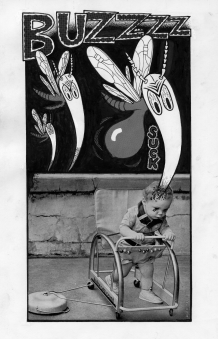




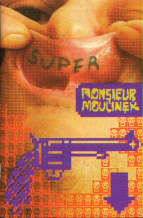
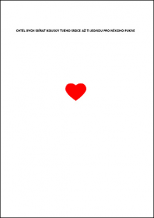
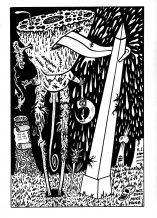
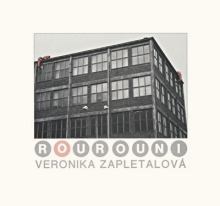


 We Are Rising National Gallery For You! Go to Kyjov by Krásná Lípa no.37.
We Are Rising National Gallery For You! Go to Kyjov by Krásná Lípa no.37.
Комментарии
Статья не была прокомментированаДобавить новый комментарий